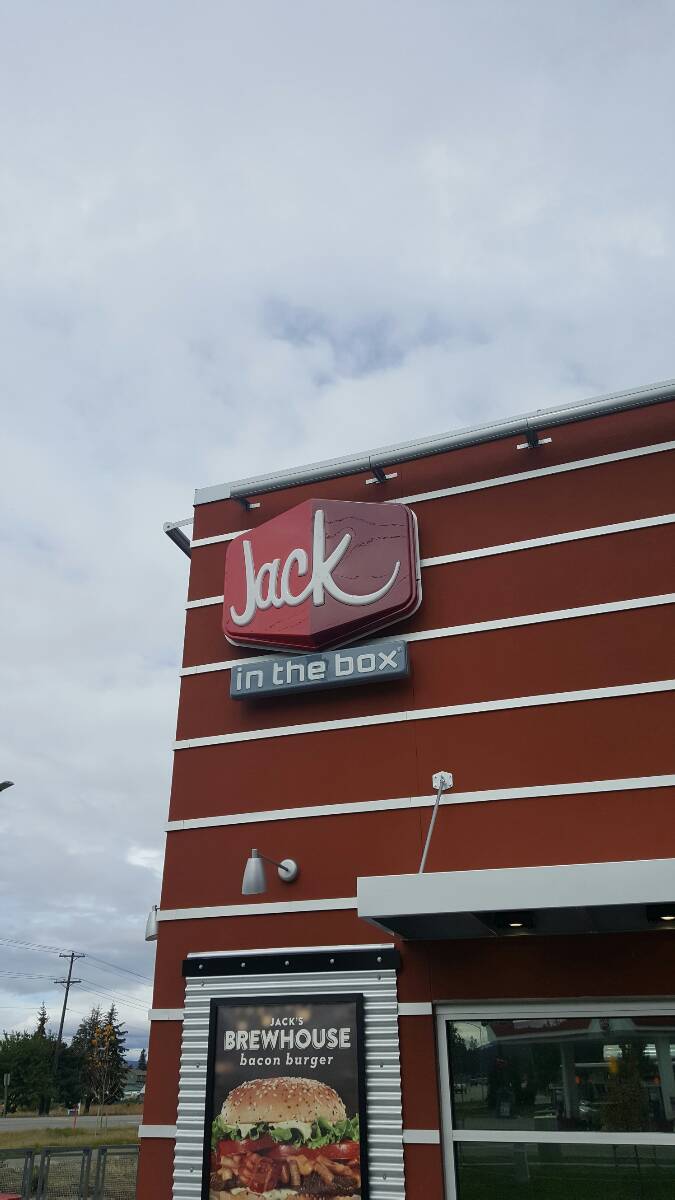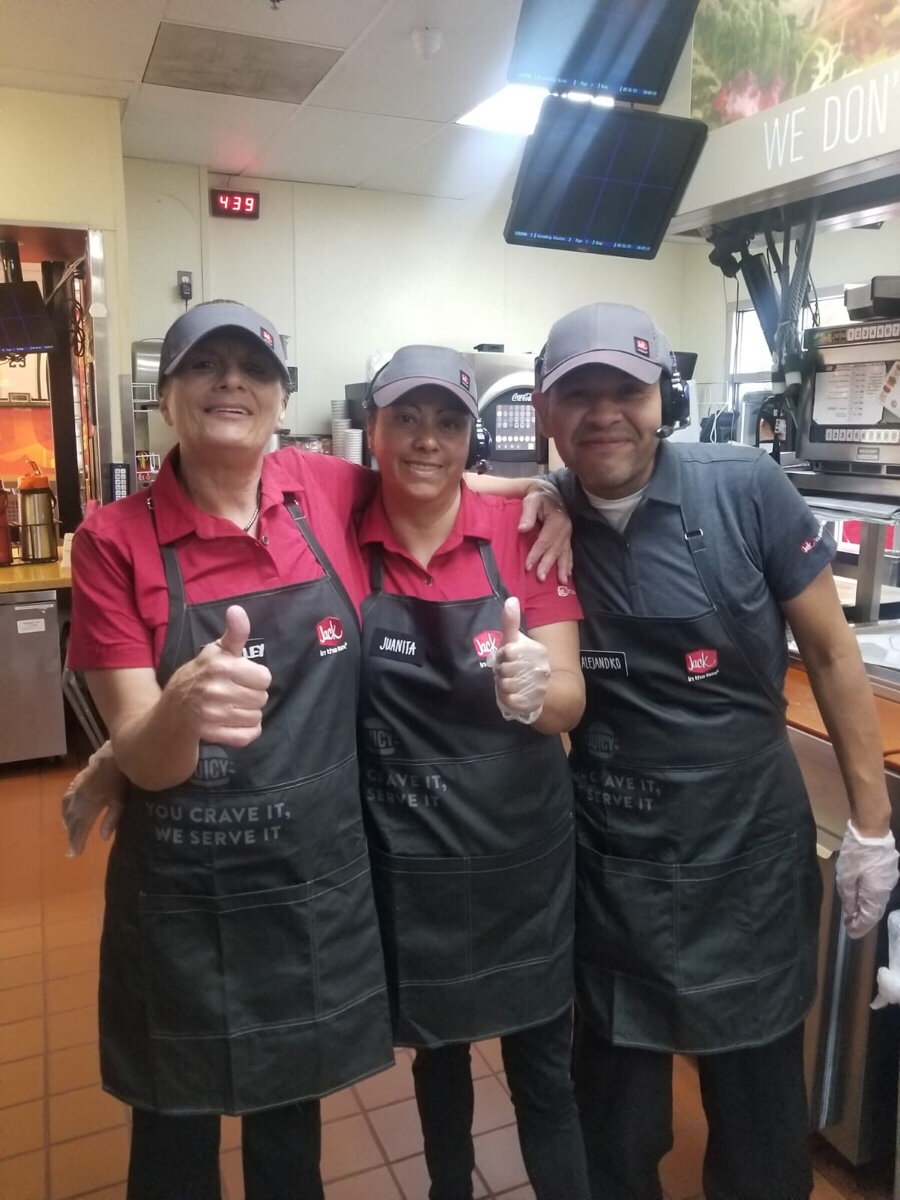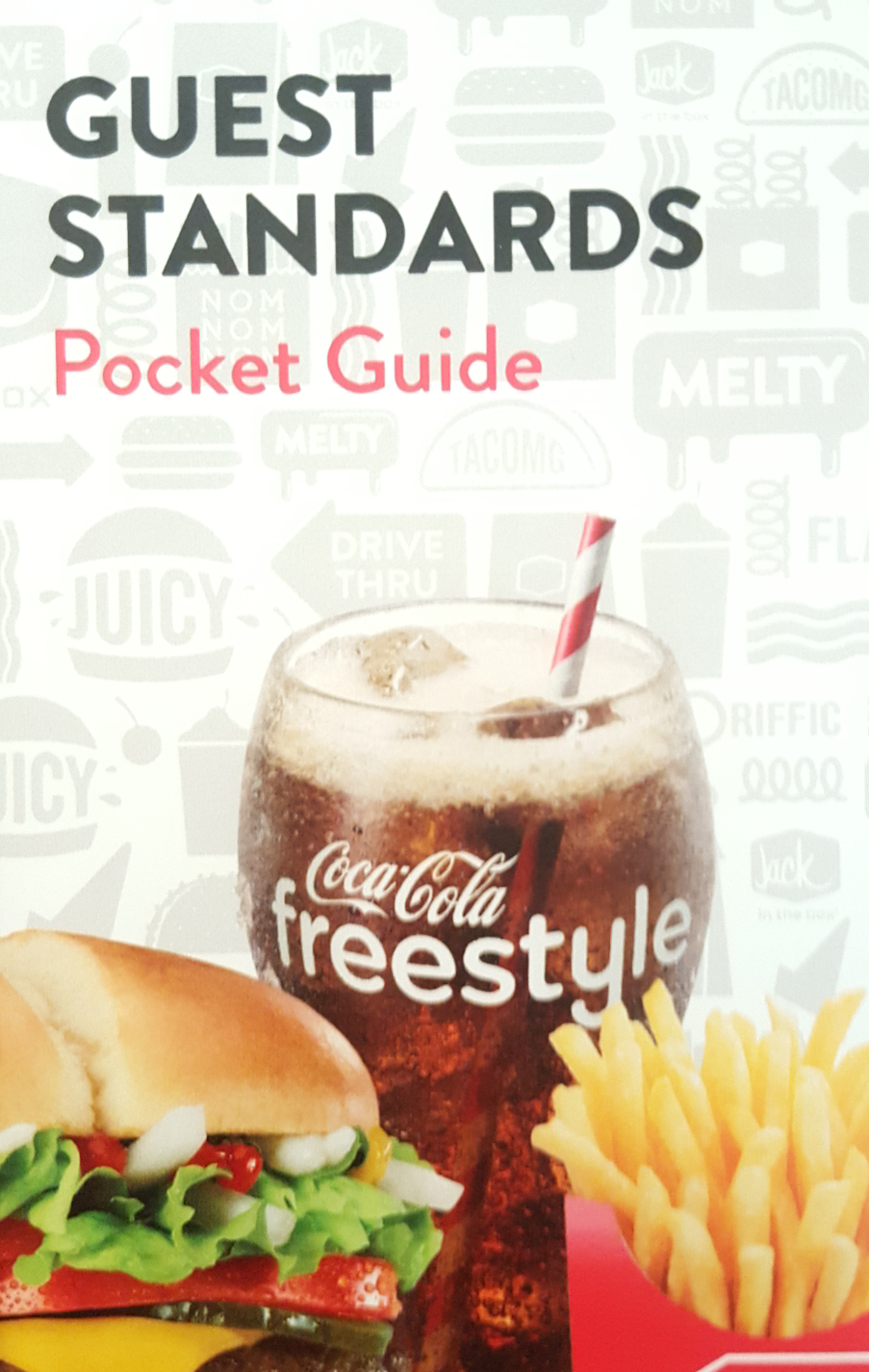Information
-
Audit Title
-
Client / Site
-
Conducted on
-
Rajiv Talwar
-
1) No hands are used to touch raw hamburger (Meat tongs only). (Max Score: 0)<br>Answer: 1. Consistently meets standard (0)<br>2. CRITICAL (0) Raw hamburger can contaminate hands and gloves with bacteria. Gloved or bare hands can cross- contaminate other surfaces and food they touch, creating a food safety hazard.<br>Policy: Policy •When a Food Safety standard fails, the restaurant employee or Person in Charge of the restaurant is required to take and document appropriate corrective action to address the failed standard.<br>•The Auditor observes and documents whether or not the employee or Person in Charge took appropriate corrective action to address the failed standard.<br>•The Auditor will be responsible for ensuring that appropriate corrective action to address the failed Food Safety standard is taken and documented.<br>i.Discard affected product. Do not serve<br>ii.Wash and sanitize hands<br>iii.Clean and sanitize tools, counters, and equipment<br>iv.The employee is removed from workstation for re-training and replaced with a certified grill operator
-
2) Employee does not use meat tongs (hamburger tongs) to handle cooked ready-to-eat (RTE) product. (Max Score: 0) Answer: 1. Consistently meets standard (0)<br>2. MAJOR (0) Tongs used to handle raw meat may carry dangerous bacteria on their surface. If these tongs come into contact with RTE food, bacteria from the tongs can contaminate RTE food, which will receive no further cooking. This can pose a serious food safety hazard
-
3) No bare hands are used to touch raw fish. (Max Score: 0) Answer: 1. Consistently meets standard (0)<br>2. MAJOR (0) Raw fish can contaminate hands with bacteria. Hands can easily cross-contaminate other surfaces and food they touch, creating a food safety hazard.
-
4) Raw food does not cross-contaminate RTE food or packaging. (Max Score: 0) Answer: 1. Consistently meets standard (0)<br>2. MAJOR (0) Raw food in contact with RTE food or packaging can create a microbiological cross-contamination of the RTE food or packaging. This is a food safety hazard
-
5) Chemicals do not cross-contaminate food, packaging, or tray liners. (Max Score: 0) Answer: 1. Consistently meets standard (0)<br>2. MAJOR (0) Chemicals that come in contact with food or packaging can create a chemical contamination.
-
6) Meat tongs and sear tools are stored correctly and in separate pans.Tools are changed every four (4) hours at minimum as required by the Food Code. (Max Score: 0)<br>Answer: 1. Consistently meets standard (0)<br>2. MAJOR (0) Meat tongs and sear tools come into direct contact with raw hamburger patties. If they contact other surfaces such as other tools, counter tops, tool handles, they create a hazardous microbiological cross-contamination situation. Tools are defined as tongs, sear tools, tong and sear-tool pan, rice scoop and pan, knives and cutting boards, mix-in machine spindle, protein holding drawers.
-
7) Where allowed, the JIB raw egg handling procedure is correctly followed after cracking raw shell eggs. (Max Score: 0) Answer: 1. Consistently meets standard (0)<br>2. MAJOR (0) Fingers that are not vigorously rubbed with a dedicated sanitizer towel after touching raw eggs can result in hands that are contaminated, and can easily cross-contaminate other surfaces and foods they touch, creating a food safety hazard.
-
8) No raw food is stored above or behind RTE food or packaging. (Max Score: 0) Answer: 1. Consistently meets standard (0)<br>2. MINOR (0) Raw food stored above RTE food can fall into the RTE food or packaging, creating a risk of microbiological cross contamination.
-
9) No chemicals are stored above any food or packaging. (Max Score: 0) Answer: 1. Consistently meets standard (0)<br>2. MINOR (0) Chemicals stored above any food or packaging can fall or spill into food or packaging, creating a risk of chemical cross-contamination.
-
10) Rings with stones, artificial fingernails, nails with nail polish or jewelry are covered by gloves. If any of these items are worn by management and/or Guest Service employees, they must be covered by gloves when handling food. (Max Score: 0)<br>Answer: 1. Consistently meets standard (0)<br>2. MINOR (0) Stones in rings (diamonds, gems, glass, dangling attachments on any item that has the potential to fall into food),artificial fingernails, fingernail polish and fingernail jewelry are potential physical contaminants of food. Hands must be covered by gloves when these are worn. Jewelry other than on hands is covered by the Jack in the Box uniform and appearance policies.
-
11) Spatulas, cutting boards, and knives are used appropriately as identified in the IPP Manual. Tools are washed, rinsed, sanitized, and air dried. (Max Score: 0)<br>Answer: 1. Consistently meets standard (0)<br>2. MINOR (0) Spatulas, cutting boards and knives that are not used appropriately and as intended may pose a risk of physical and microbiological cross-contamination. Tools should be cleaned and sanitized as instructions require, to prevent cross-contamination.
-
12) Iced tea liner at the self-serve station secured with a zip tie and the white tube is trimmed. (Max Score: 0) Answer: 1. Consistently meets standard (0)<br>2. MINOR (0) Securing the iced tea liner prevents intentional and unintentional cross-contamination
-
Section 2. Temperature Control and HACCP Knowledge (0)<br>13) Employee(s) demonstrates appropriate corrective action at the time a CCP fails (Max Score: 0)<br>Answer: 1. Consistently meets standard (0)<br>2. CRITICAL (0) It is important that employees can demonstrate knowledge of and ability to take corrective action at the time a CCP fails.<br>Policy: Policy •When a Food Safety standard fails, the restaurant employee or Person in Charge of the restaurant is required to take and document appropriate corrective action to address the failed standard.<br>•The Auditor observes and documents whether or not the employee or Person in Charge took appropriate corrective action to address the failed standard.<br>•The Auditor will be responsible for ensuring that appropriate corrective action to address the failed Food Safety standard is taken and documented.<br>i.Stop at risk product from being served or contaminating other ingredients<br>ii.Intervene and identify cause and reason for CCP failure<br>iii.The employee is removed from workstation for re-training (if applicable)<br>iv.Verify equipment temperature/performance and initiate corrective action as applicable v.Discard affected food / ingredients as applicable<br>vi.Sanitize affected tools / work areas as applicable<br>vii.Wash and sanitize hands
-
14) Auditor performs HACCP record review. (Max Score: 0) Answer: 1. Consistently meets standard (0)<br>2. MAJOR (0) Maintaining accurate HACCP records is the foundation of our food safety program. Completing the HACCP Shift Verification form is our method of documenting the daily food safety status of our restaurants. Upon review, if a HACCP document is missing information, but corrective action has been noted, the standard has been met. If a HACCP document is missing information and corrective action is not noted, the standard has not been met
-
15) Employee(s) demonstrates the correct procedure to take temperatures of products and equipment. (Max Score: 0) Answer: 1. Consistently meets standard (0)<br>2. MAJOR (0) Employees must be able to properly use the thermometers to take temperatures of food and equipment as identified on the HACCP Shift Verification form in order to verify proper temperature control and management.
-
16a) (Temperature Group 1): Equipment and product temperatures will be chosen from either 16a or 16b. A minor violation will be assigned for each piece of equipment or product that is outside the critical temperature limit (CCP) for that product. (Max Score: 0 )<br>Answer: 1. Consistently meets standard (0) 2. 1 MINOR (0) 3. 2 MINORS (0) 4. 3 MINORS (0) 5. 4 MINORS (0) 6. 5 MINORS (0) 7. 6 MINORS (0) 8. 7 MINORS (0) 9. 8 MINORS (0) 10. 9 MINORS (0) 11. N/A (alternate question answered) (0)<br>Note: Storage Refrigerator ≤ 41°F POU Grill Refrigerator ≤ 41°F<br>Fryers ≥ 350°F<br>Rice ≥ 135°F<br>Natural Cheese on Condiment Rail ≤ 41°F<br>POU Prep Area Refrigerator ≤ 41°F<br>Jumbo Patty ≥ 155°F<br>Shake Mix ≤ 41°F<br>Flat Grill: ≥ 325°F or Taylor Clamshell Grill: ≥ 285°F (surface) AND ≥ 410°F (top platen Teflon)<br>Policy: Policy ANSWER 16a or 16b only!<br>Mark the unanswered question as "N/A".<br>Choose the answer option based on how many non-compliances were found, and then check the specific pre-defined notes for those non-compliances.<br>The Auditor will ask the person(s) taking HACCP records in the restaurant on the day of the audit to collect and record the above equipment and product temperatures as they normally would. The Auditor will not interfere in any way, but merely observe. The restaurant will be evaluated on the correct demonstration of knowledge of HACCP principles by the employee. Maintaining the correct equipment or product temperatures is necessary to maintain the safety of our food products. Minor points will be deducted for each piece of food or equipment that does not meet the correct critical temperature (CCP).<br>The employee will take and record the temperatures of these items for this question, using the restaurant's thermometer (Probe or Food ProPlus).<br>Employee must take five temperatures from each patty, and all must be 155°F or above. Harmful bacteria are killed at this temperature.* If a critical temperature is not met, examples of corrective action may include discarding product, correcting temperature of equipment, calling for equipment maintenance, taking product temperatures within the refrigerator if the refrigerator temperature is too hot, or checking the calibration of the thermometer
-
17) Final flip and visual check on all raw hamburger patties are performed correctly and consistently (no pink or red meat); juices must be clear. (Max Score: 0)<br>Answer: 1. Consistently meets standard (0)<br>2. CRITICAL (0) Final flip serves to remove any red juices from the patty surface, and visual check confirms that the center of patty is not pink or red, to show the patty is cooked properly.<br>Policy: Policy •When a Food Safety standard fails, the restaurant employee or Person in Charge of the restaurant is required to take and document appropriate corrective action to address the failed standard.<br>•The Auditor observes and documents whether or not the employee or Person in Charge took appropriate corrective action to address the failed standard.<br>•The Auditor will be responsible for ensuring that appropriate corrective action to address the failed Food Safety standard is taken and documented.<br>i.Discard hamburger patty or assembled product that was not visually checked<br>ii.The employee is removed from workstation for re-training and replaced with a certified grill operator<br>iii.Clean and sanitize tools, counters, and equipment iv.Wash and sanitize hands
-
18) Raw eggs are cooked thoroughly and visually checked (yolks are solid, not runny). (Max Score: 0) Answer: 1. Consistently meets standard (0)<br>2. MAJOR (0) Raw eggs may contain harmful bacteria. The visual check confirms that the center of the egg is cooked properly.
-
19) Pasteurized egg yolks are cooked thoroughly and visually checked (yolks are solid, not runny). Visual check on sirloin patty. (Max Score: 0)<br>Answer: 1. Consistently meets standard (0)<br>2. MINOR (0) Pasteurized egg yolks are cooked thoroughly because guests expect fully cooked eggs. This practice ensures consistency if restaurants substitute unpasteurized, raw eggs. The visual check on sirloin and pasteurized eggs helps to maintain consistency in procedure. Risk of illness from undercooking is lower because these products are fully cooked (sirloin) or pasteurized (eggs).
-
Section 4. Employee Health and Hygiene (0)<br>20) No employees are ill (nauseous, vomiting, diarrhea or jaundice). (Max Score: 0)<br>Answer: 1. Consistently meets standard (0)<br>2. CRITICAL (0) Ill employees may contaminate food and pass their infection on to other employees or guests.<br>Policy: Policy •When a Food Safety standard fails, the restaurant employee or Person in Charge of the restaurant is required to take and document appropriate corrective action to address the failed standard.<br>•The Auditor observes and documents whether or not the employee or Person in Charge took appropriate corrective action to address the failed standard.<br>•The Auditor will be responsible for ensuring that appropriate corrective action to address the failed Food Safety standard is taken and documented.<br>i.Ill employees are not allowed to work<br>ii.Destroy affected ingredients or food contacted by ill employee<br>iii.Wash, rinse, sanitize (or replace) tools used by ill employee iv.Contact the Quality Hotline for further instruction
-
21) Wounds are bandaged with a blue bandage, and covered with a food handler glove. (Max Score: 0) Answer: 1. Consistently meets standard (0)<br>2. MAJOR (0) Bandages and gloves create a physical barrier between the wound and food or food contact surfaces. A blue bandage is easily seen so it will not become a physical contaminant of food.
-
Section 5. Quality of Hand Washing (0)<br>22) Hands must be washed only at the hand wash sink(s) using soap. (Max Score: 0)<br>Answer: 1. Consistently meets standard (0)<br>2. CRITICAL (0) Proper, frequent hand washing is one of the most important things you can do to prevent cross- contamination and protect your guests, your fellow employees, and yourself from bacteria that can cause illness. Hand washing with soap is required by the food code.<br>Policy: Policy •When a Food Safety standard fails, the restaurant employee or Person in Charge of the restaurant is required to take and document appropriate corrective action to address the failed standard.<br>•The Auditor observes and documents whether or not the employee or Person in Charge took appropriate corrective action to address the failed standard.<br>•The Auditor will be responsible for ensuring that appropriate corrective action to address the failed Food Safety standard is taken and documented.<br>i.Destroy any food in the sink<br>ii.Wash, rinse, sanitize, air dry any tools in the sink<br>iii.Re-direct employee(s) to appropriate hand wash sink<br>iv.Confirm appropriate hand wash sink is stocked (hot water, soap, disposable towels, hand sanitizer, trash receptacle). v.Instruct employee(s) to wash hands in appropriate hand wash sink
-
23) Hands are washed in running hot water. Hot water is available within 30 seconds. (Max Score: 0) Answer: 1. Consistently meets standard (0)<br>2. MINOR (0) Hot water is needed to kill germs and bacteria.
-
24) Hands are washed for at least 20 seconds and dried with a single use towel or air dryer. Hand washing is followed by applying hand sanitizer. (Max Score: 0)<br>Answer: 1. Consistently meets standard (0)<br>2. MINOR (0) Hands must be washed only at hand washing sinks, using hot running water for 20 seconds. Properly washed hands should prevent cross-contamination. Applying sanitizer is a Jack in the Box best practice.
-
Section 6. When to Wash Hands (0)<br>25) After using the restroom, wash hands twice (in the restroom, and again upon entering the kitchen). (Max Score: 0)<br>Answer: 1. Consistently meets standard (0)<br>2. CRITICAL (0) Hands are washed in the restroom to minimize the spread of bacteria. They must be washed again in the kitchen to remove any bacteria that may have been on any door handles or other surfaces that the employee may have touched.<br>Policy: Policy •When a Food Safety standard fails, the restaurant employee or Person in Charge of the restaurant is required to take and document appropriate corrective action to address the failed standard.<br>•The Auditor observes and documents whether or not the employee or Person in Charge took appropriate corrective action to address the failed standard.<br>•The Auditor will be responsible for ensuring that appropriate corrective action to address the failed Food Safety standard is taken and documented.<br>1.If a cross contamination occurs due to incorrect or missed hand washing, discard affected product.<br>2.Clean and sanitize contaminated counters, utensils, equipment, and hands<br>3.Coach and on proper hand washing procedures 4.Observe correct behavior
-
26) At the beginning of their shift and after returning from their break. (Max Score: 0) Answer: 1. Consistently meets standard (0)<br>2. CRITICAL (0) Hands must be washed prior to beginning work to remove dirt, debris, as well as germs.<br>Policy: Policy •When a Food Safety standard fails, the restaurant employee or Person in Charge of the restaurant is required to<br>take and document appropriate corrective action to address the failed standard.<br>•The Auditor observes and documents whether or not the employee or Person in Charge took appropriate corrective action to address the failed standard.<br>•The Auditor will be responsible for ensuring that appropriate corrective action to address the failed Food Safety standard is taken and documented.<br>1.If a cross contamination occurs due to incorrect or missed hand washing, discard affected product.<br>2.Clean and sanitize contaminated counters, utensils, equipment, and hands<br>3.Coach and on proper hand washing procedures<br>4.Observe correct behavior
-
27) After touching human body parts, i.e., face, head or hair. (Max Score: 0) Answer: 1. Consistently meets standard (0)<br>2. MAJOR (0) Hands that touch any surface or body part may become contaminated. Hands can easily contaminate other food or surfaces that they touch.
-
28) After coughing, sneezing on hands, using a handkerchief or disposable tissue, or after using tobacco, eating, or drinking. (Max Score: 0)<br>Answer: 1. Consistently meets standard (0)<br>2. MAJOR (0) Hands that have come in contact with the mouth or nose are contaminated, and must be washed to prevent cross-contamination.
-
29) After conducting a cleaning activity, handling dirty equipment, utensil or surface, touching a trash can or picking up any dropped food or item from the floor. (Max Score: 0)<br>Answer: 1. Consistently meets standard (0)<br>2. MAJOR (0) Handling dirty equipment or engaging in other cleaning activities can contaminate hands that can result in cross-contamination when food and food contact surfaces are touched.
-
30) Before handling food and during food preparation as often as necessary to remove soil, and to prevent cross-contamination. (Max Score: 0)<br>Answer: 1. Consistently meets standard (0)<br>2. MAJOR (0) Raw foods can contaminate hands with bacteria. Hands can easily contaminate other surfaces that they touch.
-
31) Before putting on food handler gloves. (Max Score: 0) Answer: 1. Consistently meets standard (0)<br>2. MINOR (0) Washing hands before putting on food handler gloves is required in the Food Code.
-
32) After touching surfaces that could cause cross-contamination, such as dirty tables, cardboard boxes or shared non-food contact surfaces such as telephones. (Max Score: 0)<br>Answer: 1. Consistently meets standard (0)<br>2. MINOR (0) Hands that touch contaminated surfaces may become contaminated. Hands can then contaminate other food or surfaces that they touch.
-
33) All employees including management inside the restaurant involved in food handling or preparation, ingredient prep, guest service and dishwashing wash their hands within 15 minutes of the timer going off. (Max Score: 0)<br>Answer: 1. Consistently meets standard (0)<br>2. CRITICAL (0) Hourly hand washing is essential to minimizing cross contamination. It is a minimum standard and does not replace any other time hand washing should occur.<br>Policy: Policy •When a Food Safety standard fails, the restaurant employee or Person in Charge of the restaurant is required to take and document appropriate corrective action to address the failed standard.<br>•The Auditor observes and documents whether or not the employee or Person in Charge took appropriate corrective action to address the failed standard.<br>•The Auditor will be responsible for ensuring that appropriate corrective action to address the failed Food Safety standard is taken and documented.<br>i.If hourly hand wash is missed, immediately have all employees wash and sanitize hands<br>ii.Verify hand wash timer is correctly set and running<br>iii.If cross contamination occurs due to missed hand washing, discard affected product. iv.Clean and sanitize any contaminated counters, utensils, equipment, and hands
-
34) The timer is always running and reset when it goes off. (Max Score: 0) Answer: 1. Consistently meets standard (0)<br>2. MINOR (0) The hand wash timer needs to be running to ensure that the hourly hand wash occurs. Resetting the timer immediately when it sounds ensures that the next hour's cycle begins right away.
-
Section 8. General Risk Assessment (0)<br>35) The restaurant is free of any imminent health hazard while operating (Max Score: 0)<br>Answer:<br>Note:<br>Policy:<br>1. Consistently meets standard (0)<br>2. CRITICAL (0) An imminent health hazard is something that has the potential to cause a significant threat or danger to employees and to the public. These food safety risks require closure of the restaurant. Sewage and waste water are contaminated with bacteria, viruses and parasites. When they come into contact with food, equipment, food contact surfaces, hands, and the bottom of employees' shoes, they have the potential to cause serious illness. Pests such as cockroaches and rodents can spread disease, and damage food and supplies. Unsanitary conditions are those that might be contaminated with dirt or filth, or lead to injury, spread of disease, or provide harbor (shelter) for pests.<br>Unsanitary conditions present<br>Sewage/standing water present on floors<br>Rodent/roach infestation observed<br>Water unavailable<br>Power is off<br>Active fire observed<br>Policy Question is non-compliant if any of the pre-defined notes are marked incorrect.<br>How to evaluate this standard:<br>Upon entry the restaurant is free of any imminent health hazard while operating. The standard is met.<br>If an imminent health hazard occurs during an assessment, and corrective action, up to and including closing the restaurant is taken, the standard is met.<br>If an imminent health hazard occurs during an assessment and no corrective action is taken, the standard is not met.<br>•When a Food Safety standard fails, the restaurant employee or Person in Charge of the restaurant is required to take and document appropriate corrective action to address the failed standard.<br>•The Auditor observes and documents whether or not the employee or Person in Charge took appropriate corrective action to address the failed standard.<br>•The Auditor will be responsible for ensuring that appropriate corrective action to address the failed Food Safety standard is taken and documented.<br>i.The person in charge must take appropriate corrective action which includes:<br>1.Call the QA Hotline (1-800-500-5225, option 2, option 1) to report the event.<br>2.Notify restaurant management<br>3.Depending on the situation, additional corrective actions may include: a.Contact Facilities Services<br>b.Protecting food or destroying contaminated food<br>c.Isolating, sanitizing areas of contamination (such as floors, drains) d.Contact Pest Control Operator<br>e.Close the restaurant
-
36) The restaurant is free of any general health hazard while operating (Max Score: 0) Answer: 1. Consistently meets standard (0)<br>2. MAJOR (0) Standing water and lack of hot water present a real health hazard. Pests in the kitchen and food storage area<br>can cause food contamination.<br>Note: Standing water observed in floor sink<br>Flies, ants, moths, crickets present in kitchen or food storage area<br>No hot water<br>Policy: Policy Question is non-compliant if any of the pre-defined notes are marked incorrect.<br>How to evaluate this standard:<br>Upon entry the restaurant is free of any general health hazard while operating. The standard is met.<br>If a general health hazard occurs during an assessment, and corrective action, up to and including closing the restaurant is taken, the standard is met.<br>If a general health hazard is present upon entry, the standard has not been met.<br>If a general health hazard occurs during an assessment and n
-
37) What tools need to be rotated every four hours and why? (Max Score: 0)<br>Answer: 1. Correct (0)<br>2. Incorrect (0) Tongs, sear tool, tong and sear tool pans, cutting boards, knives, Protein Holding Cabinet drawers (if applicable), meat/egg spatulas, and rice scoop/pan, cool covers and egg rings. They need to be rotated to break the chain of contamination.<br>3. N/A (0)<br>Policy: Policy Auditor needs to choose THREE of the questions in this section to answer during audit. All remaining question answers can be marked "N/A".<br>Correct Answer: Tongs, sear tool, tong and sear tool pans, cutting boards, knives, Protein Holding Cabinet drawers (if applicable), meat/egg spatulas, and rice scoop/pan, cool covers and egg rings. They need to be rotated to break the chain of contamination
-
38) What products can you handle with yellow spatula and why is it important? (Max Score: 0) Answer: 1. Correct (0)<br>2. Incorrect (0) Eggs (ham for immediate use with eggs).<br>3. N/A (0)<br>Policy: Policy Auditor needs to choose THREE of the questions in this section to answer during audit. All remaining question<br>answers can be marked "N/A".<br>Correct Answer: Eggs (ham for immediate use with egg). Meat spatula (white) must be<br>used to transfer ham to the Protein Holding Cabinet in order to avoid egg allergens from being transferred to other products.
-
39) Name two situations when the restaurant should be closed. (Max Score: 0) Answer: 1. Correct (0)<br>2. Incorrect (0) Sewer back up, no electricity, no hot water, pest infestation, fire etc.<br>3. N/A (0)<br>Policy: Policy Auditor needs to choose THREE of the questions in this section to answer during audit. All remaining question<br>answers can be marked "N/A".<br>Correct Answer: Sewer back up, no electricity, no hot water, pest infestation, fire etc.
-
40) What is the acceptable temperature range for the fryers? (Max Score: 0) Answer: 1. Correct (0)<br>2. Incorrect (0) 365 degrees +/- 15 degrees. Products may not cook properly if below 350 degrees.<br>3. N/A (0)<br>Policy: Policy Auditor needs to choose THREE of the questions in this section to answer during audit. All remaining question<br>answers can be marked "N/A".<br>Correct Answer: 365 degrees +/- 15 degrees. Products may not cook properly if below 350 degrees
-
41) What is the maximum temperature for shake or smoothie mix? (Max Score: 0)<br>Answer:<br>Policy:<br>1. Correct (0)<br>2. Incorrect (0) 41 degrees<br>3. N/A (0)<br>Policy Auditor needs to choose THREE of the questions in this section to answer during audit. All remaining question answers can be marked "N/A".<br>Correct Answer: 41 degrees
-
42) Grill lane temperatures. <br>Employee first scrapes the grill lanes before they add butter to the center of the lane.<br>Using the infrared beam employee takes temperature of grill 350 +/- 25 degrees.<br>Ask employee what to do if temp is below 325 standard.<br>Employee must know to recheck the lane within 5 minutes if still below standard employee must block off the lane with stainless steel transfer pans and document in the HACCP and cal for service. MAJOR
-
43) Hamburger patty check and demonstration.<br>Employee or manager who conducted HACCP during that shift will be required to perform patty check.<br>Place patty in the center of the lowest temperature lane, turn on matching timer, then sear.<br>Upon timer sounding that product has finished cooking final flip and visual check must be observed.<br>Employee must sanitize the probe and take 5 temperatures that must be above 155 degrees.<br>Employee must know the proper corrective action. <br>Destroy patty and restart the whole process if patty does not meet again destroy patty and call QA. CRITICAL if proper action is not taken.
Scoring and Results
-
Scoring: 1 Critical = Fail 3 Majors= 1 Critical = Fail 9 Minors = 3 Majors = 1 Critical = Fail Any combination of the above scoring will result in failure of audit
-
Audit pass or fail
















